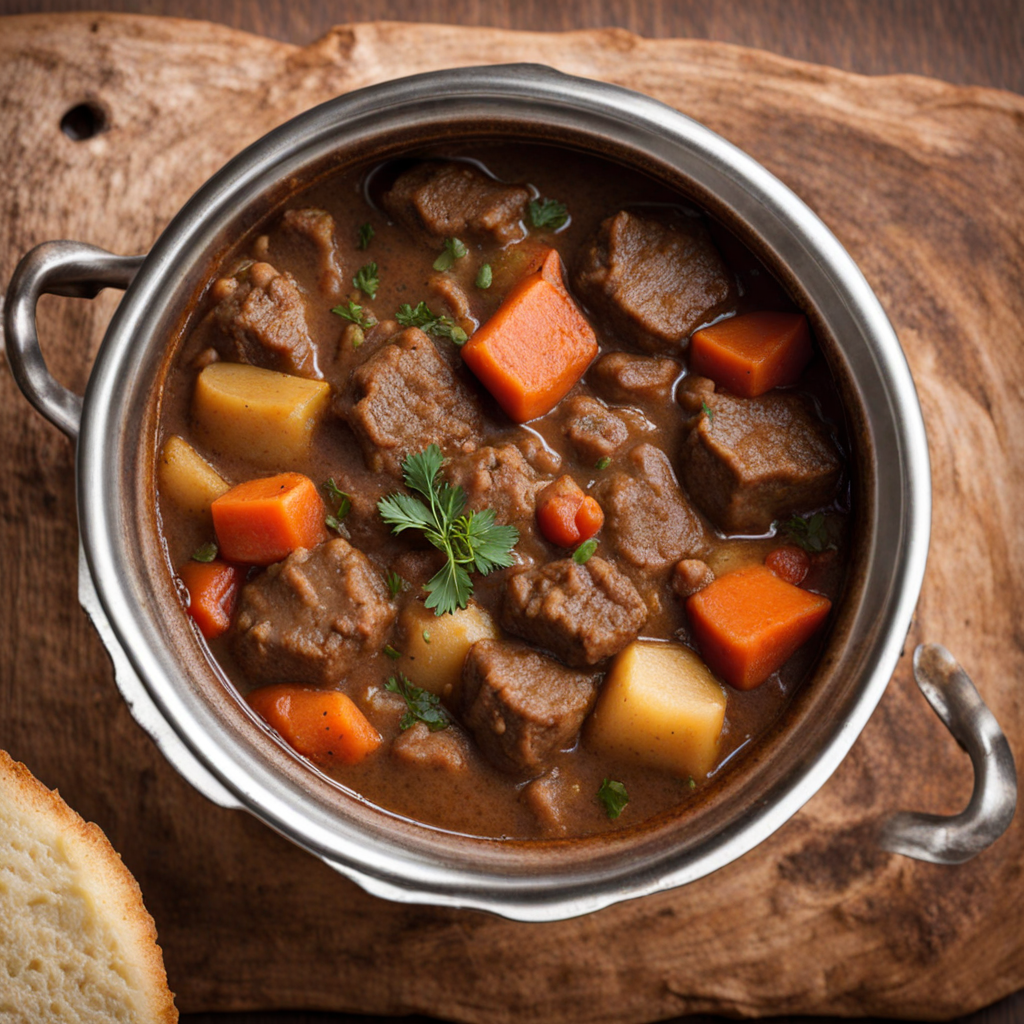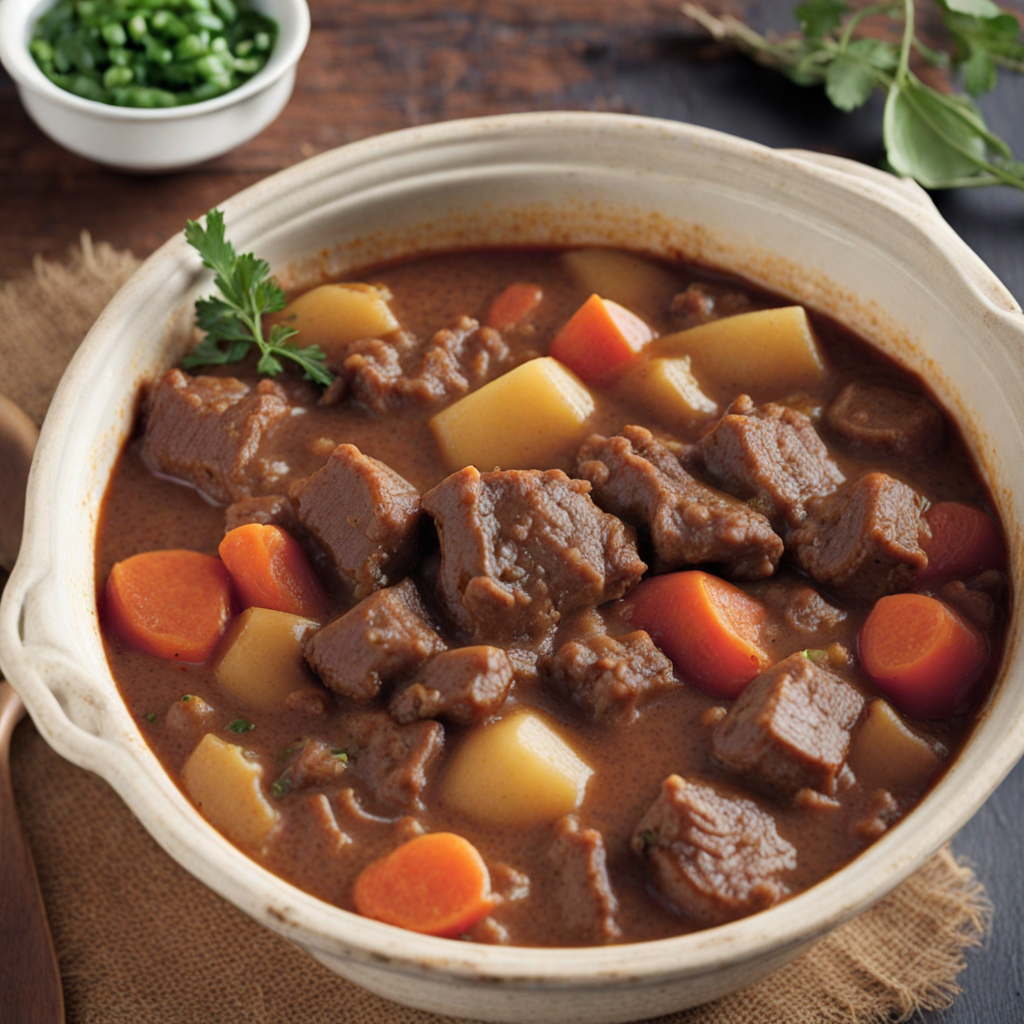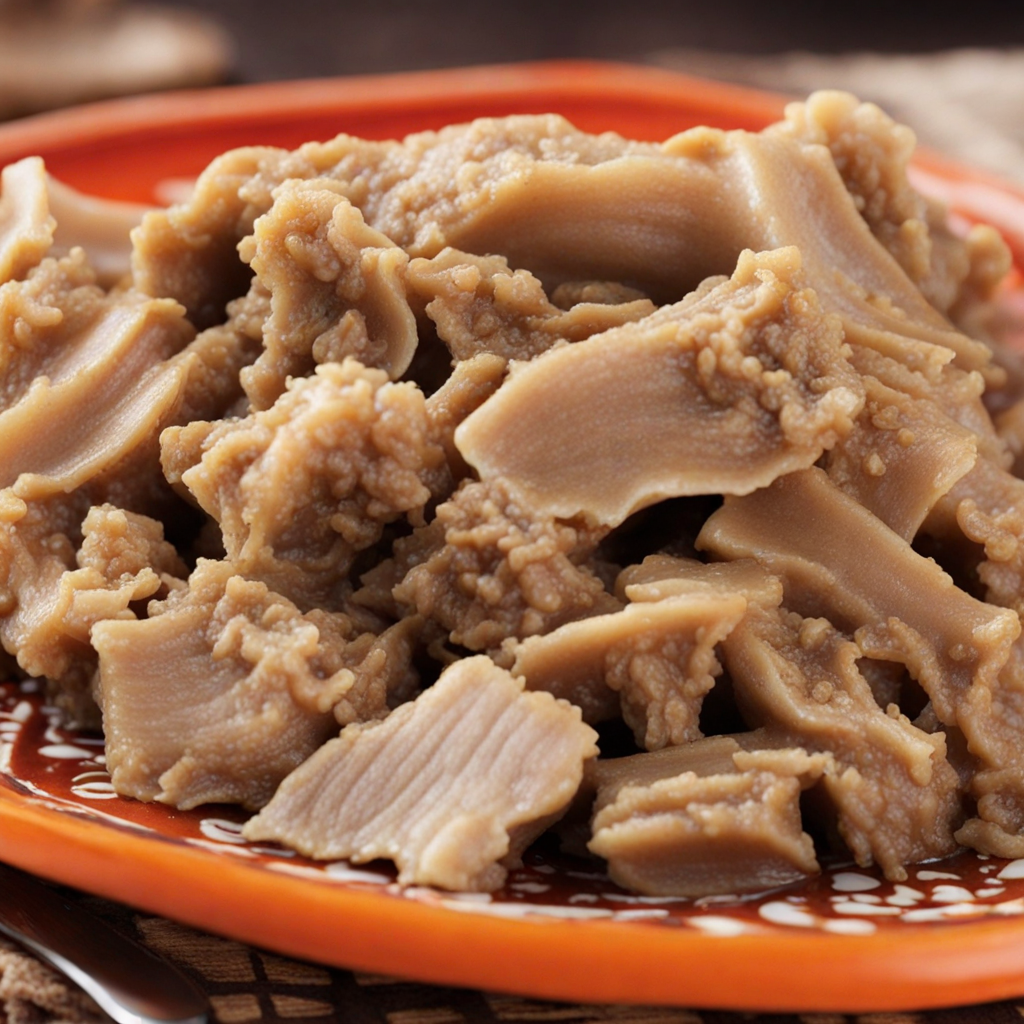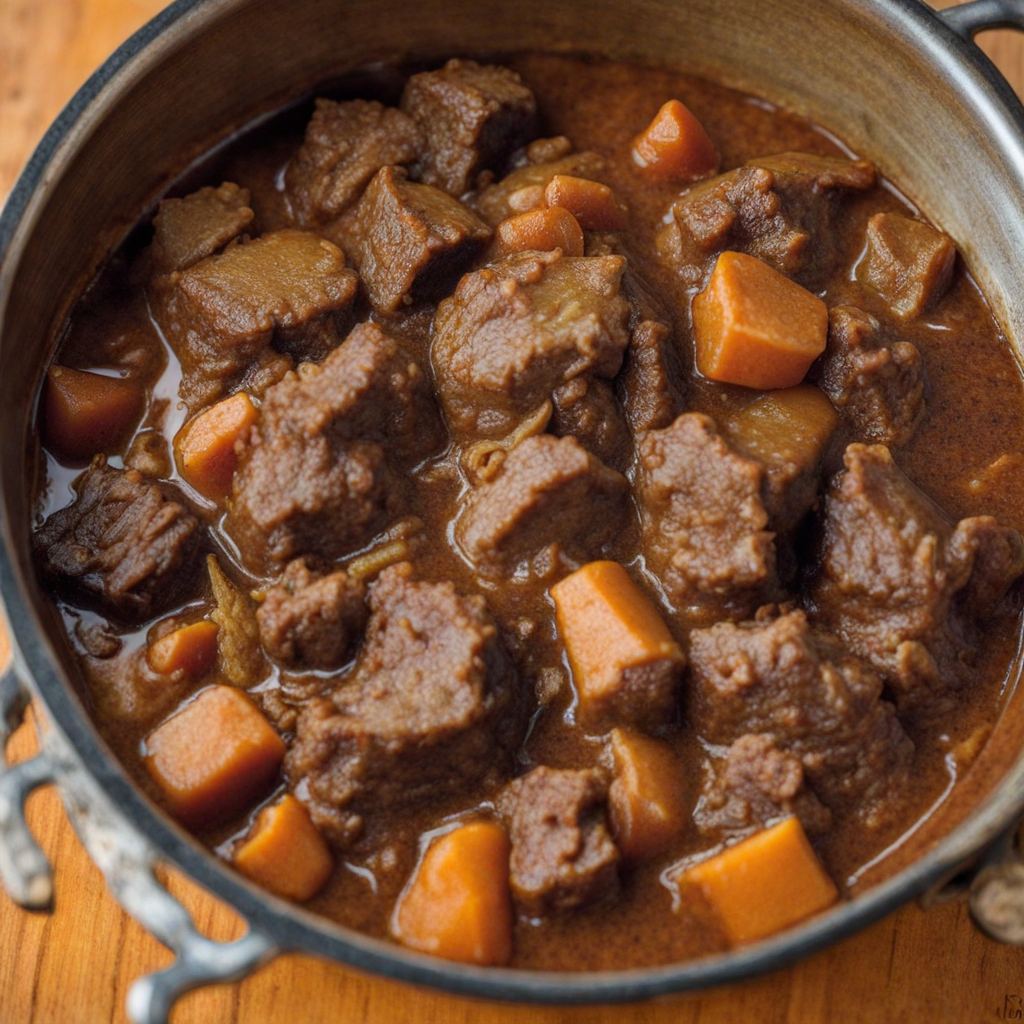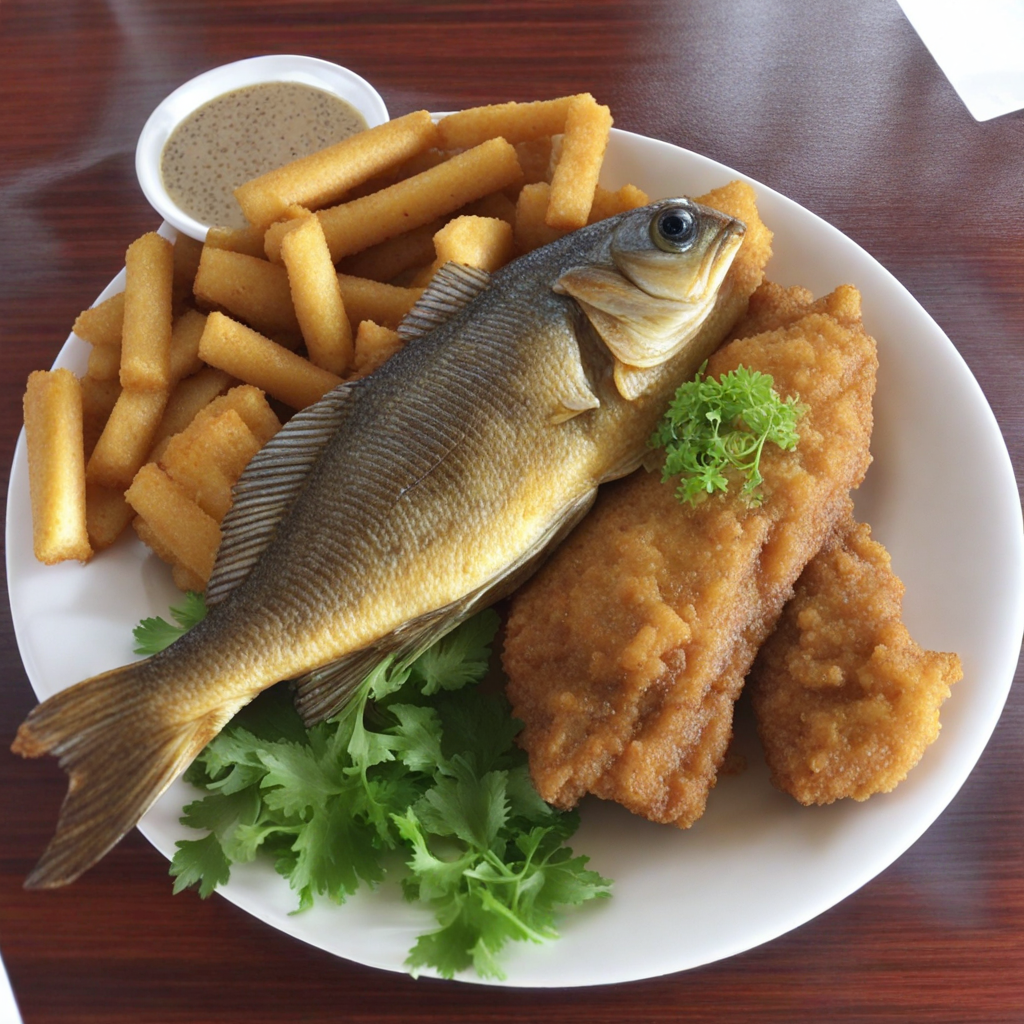Beef Stew
Beef stew in Botswana, locally known as "Seswaa," is a hearty and comforting dish that embodies the warmth and richness of traditional Batswana cuisine. The primary ingredient, beef, is typically sourced from free-range cattle, allowing for a depth of flavor that is both robust and satisfying. The meat is slowly simmered until tender, often accompanied by a mix of spices like garlic, onions, and freshly ground black pepper, which enhance its natural taste while imparting a savory aroma that fills the kitchen. As the beef cooks, it is usually combined with root vegetables such as carrots, potatoes, and sometimes pumpkin, which add a sweetness and earthiness to the stew. The slow cooking process allows all the ingredients to meld beautifully, creating a rich gravy that is both thick and flavorful. Some variations might include adding a splash of tomato sauce or a hint of chili for those who enjoy a little heat, making it a versatile dish that can be adapted to personal tastes. Traditionally served with a side of "pap" (a maize porridge), Botswana's beef stew is a complete meal that showcases the simplicity and heartiness of local ingredients. The pap serves to soak up the flavorful gravy, offering a delightful contrast in texture. This dish is often enjoyed during gatherings and celebrations, reflecting the communal spirit of Batswana culture, and inviting everyone to savor the unique and comforting flavors that define Botswana's culinary heritage.
How It Became This Dish
The History of Stew ya Nama: A Culinary Gem from Botswana Origin and Ingredients Stew ya nama, which translates to "meat stew" in Setswana, is a beloved dish in Botswana, a landlocked country in Southern Africa characterized by its diverse landscapes, rich wildlife, and vibrant cultures. The origins of stew ya nama can be traced back to the traditional cooking practices of the Tswana people, the predominant ethnic group in Botswana. The dish is typically made with beef, although it can also include goat or lamb, reflecting the pastoral lifestyle of many Tswana communities. The ingredients of stew ya nama are simple yet varied, showcasing the agricultural bounty and livestock husbandry that are central to the Tswana way of life. The base of the stew often consists of meat, onions, tomatoes, and a variety of spices. The use of local vegetables, such as carrots and potatoes, adds flavor and nutritional value. The dish is often served with pap (a stiff porridge made from maize meal), which is a staple food in Botswana and much of Southern Africa. Cultural Significance Stew ya nama is more than just a meal; it holds significant cultural value among the Tswana people. Traditionally, meat has been a symbol of wealth and status. In pastoral societies, the ownership of cattle is often associated with prosperity and social standing. As such, stew ya nama is frequently prepared for special occasions, such as weddings, celebrations, and communal gatherings. The act of sharing this hearty stew fosters a sense of community and togetherness, reinforcing social bonds. Moreover, the preparation of stew ya nama is often a communal activity. Families gather to cook and share stories, passing down culinary traditions from one generation to the next. This communal aspect of cooking is integral to the social fabric of Botswana, where meals are often a time for connection and celebration. Development Over Time The history of stew ya nama is intertwined with the evolution of Botswana's culinary landscape. Historically, Botswana was inhabited by various indigenous groups, each with their own unique food practices. The Tswana people, who settled in the region, brought with them their agricultural knowledge and livestock-rearing techniques. Over time, as the country transitioned from a nomadic to a more settled lifestyle, the methods of cooking and preparation evolved. The introduction of new cooking techniques and ingredients during the colonial era had a lasting impact on Botswana's culinary traditions. British colonial influence brought about new spices, herbs, and cooking methods, which found their way into traditional dishes, including stew ya nama. For instance, the use of curry powder or Worcestershire sauce has become more common in contemporary recipes, adding a fusion twist while still honoring traditional flavors. In recent years, the globalization of food culture has further transformed the way stew ya nama is prepared and consumed. With the rise of social media and food blogging, traditional recipes have been shared and adapted across cultures, leading to a renewed interest in Botswana's culinary heritage. Young chefs and home cooks are experimenting with variations of stew ya nama, incorporating local and international ingredients to create innovative dishes that still pay homage to the original recipes. Modern Interpretations and Global Recognition Today, stew ya nama is not only a staple in Botswana but has also gained recognition on the global culinary stage. As African cuisine continues to garner interest worldwide, traditional dishes like stew ya nama are being celebrated for their rich flavors and cultural significance. Restaurants and food festivals are showcasing Botswana's culinary heritage, allowing international audiences to experience this hearty stew firsthand. In Botswana, stew ya nama remains a popular choice in households, often served during family gatherings and public holidays. Its robust flavor and comforting nature make it a favorite among locals and visitors alike. The dish is often accompanied by traditional beverages such as morula beer or sorghum brew, enhancing the overall dining experience. Conclusion Stew ya nama is a reflection of Botswana’s rich culinary heritage, showcasing the country’s agricultural practices, cultural traditions, and communal values. As this dish continues to evolve, it remains a symbol of unity and identity for the Tswana people. Its journey from traditional roots to modern culinary interpretations illustrates the dynamic nature of food and its ability to connect people across generations and cultures. As Botswana embraces its rich history while looking towards the future, stew ya nama will undoubtedly remain a central dish in the country's gastronomic landscape, inviting both locals and visitors to savor a taste of its vibrant culture. Through every bowl of stew ya nama, the flavors of Botswana's past, present, and future continue to be celebrated, nourishing not only the body but also the spirit.
You may like
Discover local flavors from Botswana


